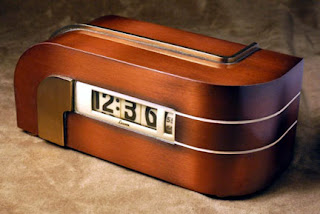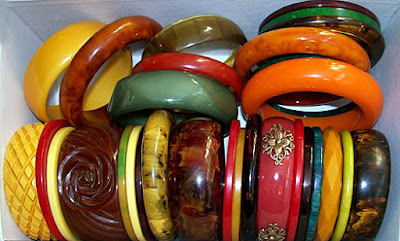 QUESTION: My husband recently purchased an old jukebox for a game room we created in our basement. It’s a Wurlitzer 1015, and considering it’s 68 years old, it still plays pretty well. He paid $3,500 for it. Can you tell me more about this machine and others like it? Did my husband get taken on this deal?
QUESTION: My husband recently purchased an old jukebox for a game room we created in our basement. It’s a Wurlitzer 1015, and considering it’s 68 years old, it still plays pretty well. He paid $3,500 for it. Can you tell me more about this machine and others like it? Did my husband get taken on this deal?
ANSWER: While the jukebox is more or less a thing of the past, a few still exist in arcades and road houses off the beaten path and in the private collections of people who yearn for a return to those happy days. The one your husband purchased is the most popular of the oldies but goodies and normally sells for twice that amount.
A jukebox, for those of you who may not know, is a partially automated music-playing device, usually a coin-operated machine, that plays selections from self-contained media, at first records, then CDs.. The classic jukebox has buttons with letters and numbers that restaurant, diner, and bar patrons pushed in combination to choose and play a specific selection at first for a 10 cents, then later 25 cents, 50 cents, and upwards.
 The earliest jukebox was called a a "nickel-in-the-slot phonograph," and it came about in the late 1880s. The state-of-the-art invention, engineered by Louis Glass and William S. Arnold of San Francisco, was a coin-operated machine that was a modification of the phonograph, invented by Thomas Edison. Upon receiving a coin, unlocked the mechanism, allowing the listener to turn a crank which simultaneously wound the spring motor and placed the reproducer's stylus in the starting groove. Frequently exhibitors would equip many of these machines with listening tubes, similar to acoustic headphones, and array them in "phonograph parlors" allowing the patron to select between multiple records, each played on its own machine. Some machines even contained carousels and other mechanisms for playing multiple records. Most machines were capable of holding only one musical selection, the automation coming from the ability to play that one selection at will. The first of these music players was put at the Palais Royal Saloon in San Francisco on November 23, 1889.
The earliest jukebox was called a a "nickel-in-the-slot phonograph," and it came about in the late 1880s. The state-of-the-art invention, engineered by Louis Glass and William S. Arnold of San Francisco, was a coin-operated machine that was a modification of the phonograph, invented by Thomas Edison. Upon receiving a coin, unlocked the mechanism, allowing the listener to turn a crank which simultaneously wound the spring motor and placed the reproducer's stylus in the starting groove. Frequently exhibitors would equip many of these machines with listening tubes, similar to acoustic headphones, and array them in "phonograph parlors" allowing the patron to select between multiple records, each played on its own machine. Some machines even contained carousels and other mechanisms for playing multiple records. Most machines were capable of holding only one musical selection, the automation coming from the ability to play that one selection at will. The first of these music players was put at the Palais Royal Saloon in San Francisco on November 23, 1889.
 The jukebox continued to evolve. Hobart C. Niblack invented a way for the machine to automatically change records in 1918. This led the Automated Musical Instrument Company (AMI) to produce an innovative type of jukebox. Initially playing music recorded on wax cylinders, the shellac 78 rpm record dominated jukeboxes in the early part of the 20th century.
The jukebox continued to evolve. Hobart C. Niblack invented a way for the machine to automatically change records in 1918. This led the Automated Musical Instrument Company (AMI) to produce an innovative type of jukebox. Initially playing music recorded on wax cylinders, the shellac 78 rpm record dominated jukeboxes in the early part of the 20th century.
 In 1928, Justus P. Seeburg, who manufactured player pianos, combined an electrostatic loudspeaker with a coin-operated record player and gave the listener a choice of eight records. This Audiophone machine was wide and bulky and had eight separate turntables mounted on a rotating Ferris wheel-like device, allowing patrons to select from eight different records. Later versions of the jukebox included Seeburg's Selectophone, with 10 turntables mounted vertically on a spindle. By maneuvering the tone arm up and down, the customer could select from 10 different records.
In 1928, Justus P. Seeburg, who manufactured player pianos, combined an electrostatic loudspeaker with a coin-operated record player and gave the listener a choice of eight records. This Audiophone machine was wide and bulky and had eight separate turntables mounted on a rotating Ferris wheel-like device, allowing patrons to select from eight different records. Later versions of the jukebox included Seeburg's Selectophone, with 10 turntables mounted vertically on a spindle. By maneuvering the tone arm up and down, the customer could select from 10 different records.
Song-popularity counters told the owner of the machine the number of times each record had been played, which allowed the owner to replace less-played songs with more popular ones.
The term "jukebox" came into use in the United States around 1940, apparently derived from the familiar usage "juke joint", derived from the word "juke" meaning disorderly, rowdy, or wicked.
 Jukeboxes had once been enclosed in wooden cabinets, but by 1937 manufacturers had begun to make them of gaudy plastic, frosted glass, jeweled mirrors, and chrome ornaments. Many of those Art Deco creations were self-contained light shows with polarized revolving disks, bubble tubes, and flashing pilasters.
Jukeboxes had once been enclosed in wooden cabinets, but by 1937 manufacturers had begun to make them of gaudy plastic, frosted glass, jeweled mirrors, and chrome ornaments. Many of those Art Deco creations were self-contained light shows with polarized revolving disks, bubble tubes, and flashing pilasters.

During those golden years, the Leonardo da Vinci of jukebox design was Wurlitzer's Paul Fuller, who was responsible for 13 full-size machines, five table models, and numerous speakers. The Golden Age of jukebox design ended when he suffered a heart attack in 1944 and died the next year. By then a new generation of larger jukeboxes had appeared, and the classic machines from the golden years—1937 to 1949—were, for the most part, relegated to the junk heap and forgotten.
 became an important, and profitable, part of any jukebox installation. They enabled restaurant patrons to select tunes from their table or booth. One example is the Seeburg 3W1, introduced in 1949 as companion to the 100-selection Model M100A jukebox. Stereo sound became popular in the early 1960s, and wallboxes of the era came with built-in speakers, enabling patrons to sample this latest technology.
became an important, and profitable, part of any jukebox installation. They enabled restaurant patrons to select tunes from their table or booth. One example is the Seeburg 3W1, introduced in 1949 as companion to the 100-selection Model M100A jukebox. Stereo sound became popular in the early 1960s, and wallboxes of the era came with built-in speakers, enabling patrons to sample this latest technology.
The popularity of jukeboxes extended from the 1940s through the mid-1960s, but they were particularly fashionable in the 1950s. By the middle of the 1940s, three-quarters of the records produced in America went into jukeboxes.
 And even with all of today’s high-tech music devices, the sound from one of those old machines was fabulous. Nothing beats hearing an old 78 on a machine created just to play it. Those were the days.
And even with all of today’s high-tech music devices, the sound from one of those old machines was fabulous. Nothing beats hearing an old 78 on a machine created just to play it. Those were the days.
To read more articles on antiques, please visit the Antiques Articles section of my Web site. And to stay up to the minute on antiques and collectibles, please join the over 30,000 readers by following my free online magazine, #TheAntiquesAlmanac. Learn more about "The Vernacular Style" in the 2024 Winter Edition, online now. And to read daily posts about unique objects from the past and their histories, like the #Antiques and More Collection on Facebook.




















































